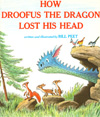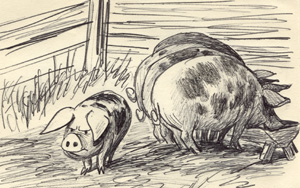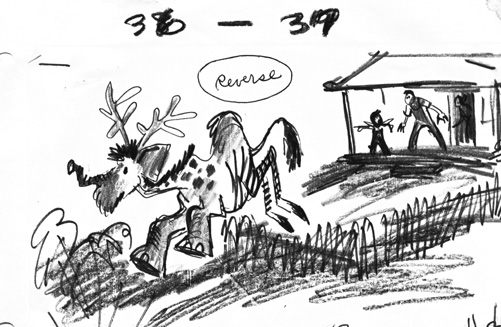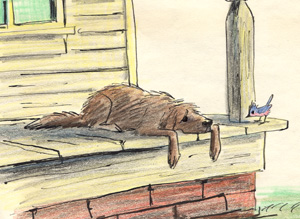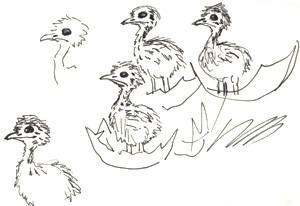A History of the World in 10½ Chapters by Julian Barnes starts with a side-splittingly funny, clever retelling of the Noah's Ark story (by one of the stowaway species) that is well worth reading if you have any sense of humour at all. The remainder of this book comprises a series of much darker, rather depressing Ark-themed short stories, such as the tale of a hijacked cruise ship. However, I highly recommend this book, simply for its first short story, which is a gem.
http://www.julianbarnes.com/bib/history.html"This Brick Ark: Celebrating the Museum of Comparative Zoology's First 150 Years and the Beginning of the Next 150", is a lecture I attended, by Dr. James Hanken, Director of Harvard's Museum of Comparative Zoology. His talk title made me wonder what the "Ark" can mean to different people. Harvard's massive collection of valuable zoological specimens is obviously worth saving, and arguably, it has always been under threat because of financial and spatial constraints. The museum is also a brick building. Ironically, a quick Google search revealed that "The Brick Ark" is also a Bed and Breakfast run by earnest Christians in Indiana. I suppose what these two uses of "Brick Ark" have in common, is the notion of providing a "safe haven".
Most of this post will be about the talk, which I found enjoyably, and somewhat surprisingly historical. Hanken is a biologist by profession, and it was heartening to see how much time he devoted to the fascinating people responsible for establishing the MCZ. In particular, the talk focused on Louis and Alexander Agassiz, father and son, and the first two directors of the MCZ. Some of the more interesting titbits included Louis Agassiz's insatiable ambition to make the MCZ an unbeatable institution. This was illustrated by some amusing quotes, including the dilemma over what to name the museum. The Museum of "Natural History" seemed too fuddy- duddy. Agassiz's personal favourite (because it encapsulated all his interests), "Comparative Zoology, Embryology and Palaeontology" was, he admitted, "too long". So the museum was, and still is, of "Comparative Zoology", a name that emphasises Agassiz's vision of the broad, synthetic research in the institution he founded.
Agassiz founded the MCZ in 1859, the very year that Darwin's
Origin was published. Ironically, Agassiz also believed staunchly in the fact that every species was "a though of God", and vehemently opposed any notions of transmutation (now known as evolution). He stuck to these views till the end of his life, and expressed his ideas most vehemently in his 1851
Essay on Classification. Although these two eminent scientists maintained a gentlemanly correspondence, Darwin did privately confide in his bulldog, Thomas H. Huxley, "I entirely agree with your remarks on Agassiz's
Essay on Classification: it is all utterly impracticable rubbish". And when the
Origin was published, Darwin politely sent Agassiz a first edition, which Agassiz didn't think much of.
In a somewhat uphill and ultimately doomed attempt to persuade his fellow biologists, and researches in his own MCZ of the impossibility of transmutation, Louis Agassiz launched many expeditions to collect specimens that would disprove Darwin. His last, the Thayer Expedition to Brazil, 1865- 1866, brought back heaps of new species, which, ironically, provided evidence supporting the notion of descent with modification from a common ancestor. Incidentally, the Thayer Expedition also included the young William James, arguably the founder of modern psychology, who appears to be the only person who didn't have a ball in Brazil.
Louis Agassiz's great contribution, in addition to founding the MCZ and finding funding for it, was to organise the public displays of stuffed animals by their geographic distribution -- something which no other museum had done. To Agassiz, the fact that one found sloths in South America and not elsewhere, was evidence that each species had been created separately according to a divine plan. Darwin and his followers also shared this interest in where different forms are found, because to proponents of transmutation, it was striking that species classified in the same group tended to be found in the same place -- as though they had all been modified from a shared ancestor. As Wallace, co-discoverer of natural selection enthused upon visiting the MCZ, "It is surely an anomaly that the naturalist who was most opposed to the theory of evolution should be the first to arrange his museum in such a way as best to illustrate that theory, while in the land of Darwin no step has been taken to escape from the monotonous routine of one great systematic series of crowded specimens arranged in lofty halls and palatial galleries, which may excite wonder but which are calculated to teach no definite lesson."
Louis Agassiz's tremendous contributions in founding the MCZ have earned him a place along former Harvard presidents in the room where Harvard's faculty meetings are held. In fact, he is one of a handful honoured with two likenesses in that room -- a portrait and a bust. Also a great geologist, Agassiz is known for being the first to present a scientific case for an ice age. This reputation for geology and anti-Darwinian notions led to quite a few jokes about Agassiz sticking his head into the ground when the San Francisco earthquake of 1906 came along, and Agassiz was the only one of four great biologists to topple from his pedestal on the Stanford Zoology building.
In keeping with his father's rather unfortunate attempts to disprove Darwin, Alexander Agassiz, the second director of the MCZ, also spent much of his life attacking a Darwinian theory-- that of how coral atolls are formed. To this end, Alexander also launched a great many expensive expeditions, and he even had massive metal replicas of coral reefs on display in the MCZ. Although Alexander died believing that he had succeeded, Darwin's atoll formation scenario still stands today.
The MCZ's subsequent directors were also colourful men. All of them struggled to fit an ever-increasing collection into limited space, with limited funds. One of the most influential, Thomas Barbour, was disturbingly fond of discarding bits of the collection in order to make space. Hanken's main message, was that in spite of changing political, economic and intellectual times, the MCZ has remained true to its founder's vision in persisting as a relatively small institution with a disproportionately large impact on the synthetic study of zoology.
Looking at the newly refurbished hall of mammals, I felt unusually grateful for the current financial crisis, which scuppered plans to move the MCZ's public displays across the river to a fancy new museum in a fancy new science park. There is something delightfully evocative about seeing musty old stuffed animals in the very brick building where they were first displayed. One can almost smell and see Agassiz's vision of a museum that would show people just how marvellous the earth's collection of living things is. Unlike previous museum events, this evening's reception was restrained and vegetarian-- a very small, and rather fitting price to pay for keeping the animals of the MCZ in this Brick Ark.
Links of possible interest:
Future Harvard Natural History Museum events:
http://www.hmnh.harvard.edu/lectures_and_special_events/index.phpWallace's exquisitely expressed essay on the MCZ:
http://www.wku.edu/~smithch/wallace/S401.htmDarwin Correspondence Project:
http://www.darwinproject.ac.uk/darwinletters/calendar/entry-2430.html







